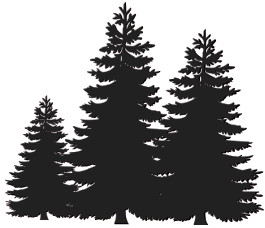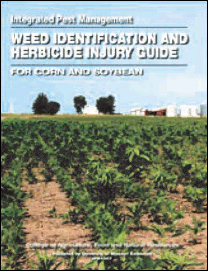

To send a message to an author, click on the author's name at the end of the article.
This Month in Ag Connection | Ag Connection - Other Issues Online
Forages are the backbone of cattle farming. Tall fescue is one of the most dominant cool season perennial forage grass species in Missouri. It has a long-growing season and is well-adapted both for grazing and hay production in Missouri.
Most of the tall fescue grown in Missouri pastures is the variety 'Kentucky-31' which tends to be infected with a toxic fungal endophyte that causes fescue toxicosis. Several management options are available to reduce the problem of fescue toxicosis to cattle. These options include: replacement with novel endophyte tall fescue, exclude cattle grazing on tall fescue during hot summer, supplement with corn or other feed, and dilution with legumes.
Inter-seeding legumes such as red clover, white clover, annual lespedeza, alfalfa and birdsfoot trefoil into the fescue pasture may be a better economical option to dilute the toxic effect of endophyte infected fescue to the cattle and obtain other benefits. Some other benefits of inter-seeding legumes into fescue pastures are:
Inter-seeding legumes into pasture requires planning. Fescue should be overgrazed during fall and early winter. Soil should be tested and application of lime, phosphorous and potassium based on soil test recommendation is needed prior to legume inter-seeding. Phosphorous is a critical nutrient for a successful legume stand establishment. Application of nitrogen fertilizer should be avoided because it stimulates grass growth in early spring and allows the grass growth to outcompete the legume seedlings during establishment. Frost seeding of red clover at 3-4 pounds pure live seed per acre in early February has shown optimal success in Northeast Missouri. Legume seed should be inoculated with proper inoculum.
The persistence of a legume in a mixed pasture depends on management. Annual lespedeza must be allowed to reseed in late August to early September. Red clover and birdsfoot trefoil should be allowed to reseed naturally every two years. Practice rotational grazing and restrict overgrazing along with nutrient, disease and other management practices helps for prolonged stand persistence of legume in the mixture.
For more information, refer to University of Missouri Extension Guides: G4651 titled Renovating Grass Sods with Legumes (online: http://extension.missouri.edu/p/G4651) and G4669 titled Tall Fescue Toxicosis (online: http://extension.missouri.edu/p/G4669). These are also available at your University of Missouri Extension center.
Source: Dhruba Dhakal, Agronomy Specialist
This Month in Ag Connection | Ag Connection - Other Issues Online
Poinsettias and Christmas trees are the most popular holiday plants. Others like holly, mistletoe, amaryllis, Christmas cactus and ivy are also associated with the holiday season. When selecting holiday plants, there are several factors to consider such as light, water requirements and the overall health of the plant.

When selecting a poinsettia, choose a plant with small, tightly clustered yellow buds in the center. Look for crisp, brightly colored, undamaged bracts (leaves). Before leaving the store, protect the plant from freezing temperatures. Wrap the plant in layers of newspapers or a double brown paper bag. Once home, place the plant in a room with bright natural light. Keep it out of drafts and away from appliances and refrigerators which give off heat. Water a poinsettia only when dry and discard excess water that runs through the pot's drainage holes. If wrapped in decorative foil, make sure the pot does not sit in water inside the wrap.
Some people believe that poinsettias are poisonous, but extensive laboratory testing and university research have concluded that poinsettias are not poisonous. However, this does not imply that they are edible. Some people develop a dermal reaction (skin rash) if exposed to the white, milky sap of poinsettias.
After a few months, do not be disappointed if the poinsettia does not look as nice as when purchased.
Commercial growers have ideal conditions that enable them to grow compact, high quality, colorful poinsettias.
Christmas trees are available in a variety of sizes, and to properly assess the size of tree needed, it is best to consider where in the house the tree will be kept. Most standard rooms will easily accommodate a 7-foot tree. Always check for freshness before purchasing a tree. Trees should have a healthy, green appearance without a large number of dead or browning needles. Needles should appear fresh and flexible and should not fall when a branch is touched. A useful tip is to lift a cut tree a couple of inches off the ground and let it drop on the cut end. Green needles should not drop off the tree. A few dried inner needles may fall, but the outer green needles should not be affected.

There are a variety of Christmas tree species to choose from on retail lots or cut-your-own tree farms. Christmas trees can be identified by the size, color, and arrangement of their needles. The four common types of Christmas trees are pine, fir, spruce and cedar. The Scotch Pine is one of the most popular Christmas tree species in the Midwest. It is known for its dark green foliage and stiff branches which are well suited for decorating with both light and heavy ornaments. It has excellent needle retention characteristics and holds up well throughout harvest, shipping and display. White Pines are also used as Christmas trees and needle retention is good to excellent. White pine has very little aroma and is reported to result in fewer allergic reactions than do some of the more aromatic species. The needles are very soft to the touch and therefore, unable to hold heavy ornaments.
Once home, the tree's freshness depends upon the type of care provided. The tree should have a fresh cut across the bottom, 1 inch above the old base. This removes any clogged wood that may not readily absorb water. Next, the tree should be placed in a stand with a large reservoir of water. It is important the tree always be kept watered and not allowed to dry out. If the tree becomes dried out, it may not be able to adequately absorb moisture once it is re-watered, and may prematurely shed needles. Fresh, well-watered Christmas trees minimize the risk of fire. With the proper selection and care, you can enjoy a fresh tree throughout the holiday season.
For more information, contact your local University of Missouri Extension center.
Source: Jennifer Schutter, Horticulture Specialist

This Month in Ag Connection | Ag Connection - Other Issues Online

University of Missouri Extension recently released a new reference publication, IPM1007, titled Weed Identification and Herbicide Injury Guide for Corn and Soybean. This publication offers 127 pages of color pictures to aid in weed identification and herbicide injury diagnosis. Herbicide injury can occur a variety of ways such as carryover from a previous crop, unintended seed or seedling exposure during a pre-emerge herbicide application, drift, and volatilization. It is often beneficial to use injury symptoms to determine the active ingredient that most likely caused the injury. This new guide adds to the extensive list of resources available from University of Missouri Extension to aid in the control of problem weeds.
Earlier this year the free ID Weeds app was updated for iPhone and Android smartphones. Updates to the app include new graphics and improvements in ease of use. The ID Weeds app helps with identification of over 430 weeds found in crop fields, pastures, lawns, gardens, and aquatic areas in Missouri and surrounding states. The ID Weeds app for iPhone is available for free from the Apple app store, and the ID Weeds app for Android is available for free from Google Play. Search for ID Weeds to find the app. University of Missouri Extension also offers an online weed identification tool. The web address for the online weed identification tool is weedid.missouri.edu. More details on the app and online weed identification tool, as well as herbicide research results, are available on the University of Missouri Weed Science Extension web page, found at weedscience.missouri.edu

Printed publications with color pictures to assist with weed identification are also available from MU Extension. Publication IPM1031, Weed and Brush Control Guide for Forages, Pastures, and Noncropland, provides information for identifying and controlling many difficult to control perennial weeds such as Sericea Lespedeza. Publications GWC-9, Biology and Management of Horseweed, and GWC-13, Biology and Management of Waterhemp, provide management information on two of the most problematic weeds in Missouri row crop fields. Go online to weedscience.missouri.edu and click the publications link to view all University of Missouri Extension publications on the topic of weed identification and control. Contact your county University of Missouri Extension office to purchase printed publications.
In situations where a unique or uncommon weed needs to be identified the weed can be shipped or carried to the University of Missouri Plant Diagnostic Clinic, located on the University of Missouri-Columbia campus in Mumford Hall. More information about the Plant Diagnostic Clinic, including diagnosis fees, can be found online at http://plantclinic.missouri.edu/
Source: Max Glover, Agronomy Specialist
This Month in Ag Connection | Ag Connection - Other Issues Online
December 15-16, 2016 in Columbia, MO.
For more information: http://plantsci.missouri.edu/cmc
Topics will include: crop, nutrient, pest, soil and water management and more.
Certified Crop Cdvisor (CCA) credits are available.
This Month in Ag Connection | Ag Connection - Other Issues Online
This past year two new ag specialists have joined the Northeast Missouri agriculture team. Both bring various experiences, much knowledge and much enthusiasm to extension.

Dhruba Dhakal became the agronomist is Chariton County in January 2016. His office is located in Keytesville. He covers all types plants including field crops and pastures. His background includes education in soils and agronomy. He completed his doctoral degree at the University of Wyoming. He can be reached at the Chariton office at 660-288-3231 or by email dhakald@missouri.edu

Anita Snell joined extension by becoming the livestock specialist in Sullivan County this past July. Her office is in the extension office in Milan in the County Courthouse 3rd floor.
She is covering various farm animal species including cattle, swine, horses, goats, sheep and more. Her background education is in agriculture science and animal science. Her undergraduate degree is from Truman State University and her masters if from Texas A&M University. She can be reached at the Sullivan County office at 660-265-4541 or by email snella@missouri.edu

Publishing Information
Ag Connection is published monthly for Northeast and Central areas of Missouri producers and is supported by the University of Missouri Extension, the Missouri Agricultural Experiment Station, and the MU College of Agriculture, Food and Natural Resources. Managing Editor: Mary Sobba.